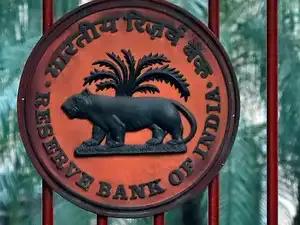India has seen 9% more rain than normal this monsoon season, but it hasn’t fallen evenly across the country. While some states are facing heavy floods, others are still waiting for the skies to open.
Between June 1 and July 16, India got 331.9 mm of rainfall. That’s about 9% more than the usual 304.2 mm for this period, according to the India Meteorological Department (IMD). However, this average hides major differences between states.
Where is rainfall normal?
Several states received rainfall within the normal range (up to 19% above or below average), including:
Uttar Pradesh, Delhi, Uttarakhand, Punjab, Himachal Pradesh, Jammu & Kashmir, Tripura, Mizoram, Manipur, Nagaland, Goa, Maharashtra, Chhattisgarh, Karnataka, Kerala, Tamil Nadu, Puducherry, Sikkim, and the Andaman and Nicobar Islands.
Which states are facing floods?
Even with normal or below-normal rainfall, some regions are suffering from floods. These include:
What had the IMD predicted earlier?
In May, the IMD had forecast that India would get 106% of its long-period average rainfall (87 cm) during the monsoon season from June to September. Rainfall between 96% and 104% is considered 'normal'.
Above-normal rain was expected in most of the country except Ladakh, parts of Himachal, the northeast, and some areas of Bihar, Jharkhand, West Bengal and Odisha. Some places like Punjab, Haryana, Kerala and Tamil Nadu were expected to get below-normal rain.
The monsoon is vital for India’s agriculture, which supports about 42% of the population and makes up 18.2% of the country’s GDP. It also helps fill reservoirs needed for drinking water and electricity generation.
Inputs from PTI
Between June 1 and July 16, India got 331.9 mm of rainfall. That’s about 9% more than the usual 304.2 mm for this period, according to the India Meteorological Department (IMD). However, this average hides major differences between states.
Where has it rained more than usual?
Some states have received much more rain than expected:- Jharkhand saw 595.8 mm of rain, which is 71% more than normal.
- Rajasthan received 271.9 mm, 116% more than its usual 125.6 mm.
- Ladakh, which usually stays dry, got 15.8 mm of rain, 97% above normal.
- These states fall under the “large excess” category.
- Madhya Pradesh – 470.6 mm (67% more)
- Gujarat – 388 mm (64% more)
- Odisha, Haryana, and Dadra & Nagar Haveli and Daman & Diu also received more than usual.
Where is rainfall normal?
Several states received rainfall within the normal range (up to 19% above or below average), including:Uttar Pradesh, Delhi, Uttarakhand, Punjab, Himachal Pradesh, Jammu & Kashmir, Tripura, Mizoram, Manipur, Nagaland, Goa, Maharashtra, Chhattisgarh, Karnataka, Kerala, Tamil Nadu, Puducherry, Sikkim, and the Andaman and Nicobar Islands.
Which states are facing floods?
Even with normal or below-normal rainfall, some regions are suffering from floods. These include:- Assam, Arunachal Pradesh, Meghalaya, Mizoram, Sikkim, Manipur, Tripura
- Uttarakhand, Karnataka (especially Shivamogga), West Bengal, Gujarat and Himachal Pradesh
What had the IMD predicted earlier?
In May, the IMD had forecast that India would get 106% of its long-period average rainfall (87 cm) during the monsoon season from June to September. Rainfall between 96% and 104% is considered 'normal'.Above-normal rain was expected in most of the country except Ladakh, parts of Himachal, the northeast, and some areas of Bihar, Jharkhand, West Bengal and Odisha. Some places like Punjab, Haryana, Kerala and Tamil Nadu were expected to get below-normal rain.
The monsoon is vital for India’s agriculture, which supports about 42% of the population and makes up 18.2% of the country’s GDP. It also helps fill reservoirs needed for drinking water and electricity generation.
Inputs from PTI








